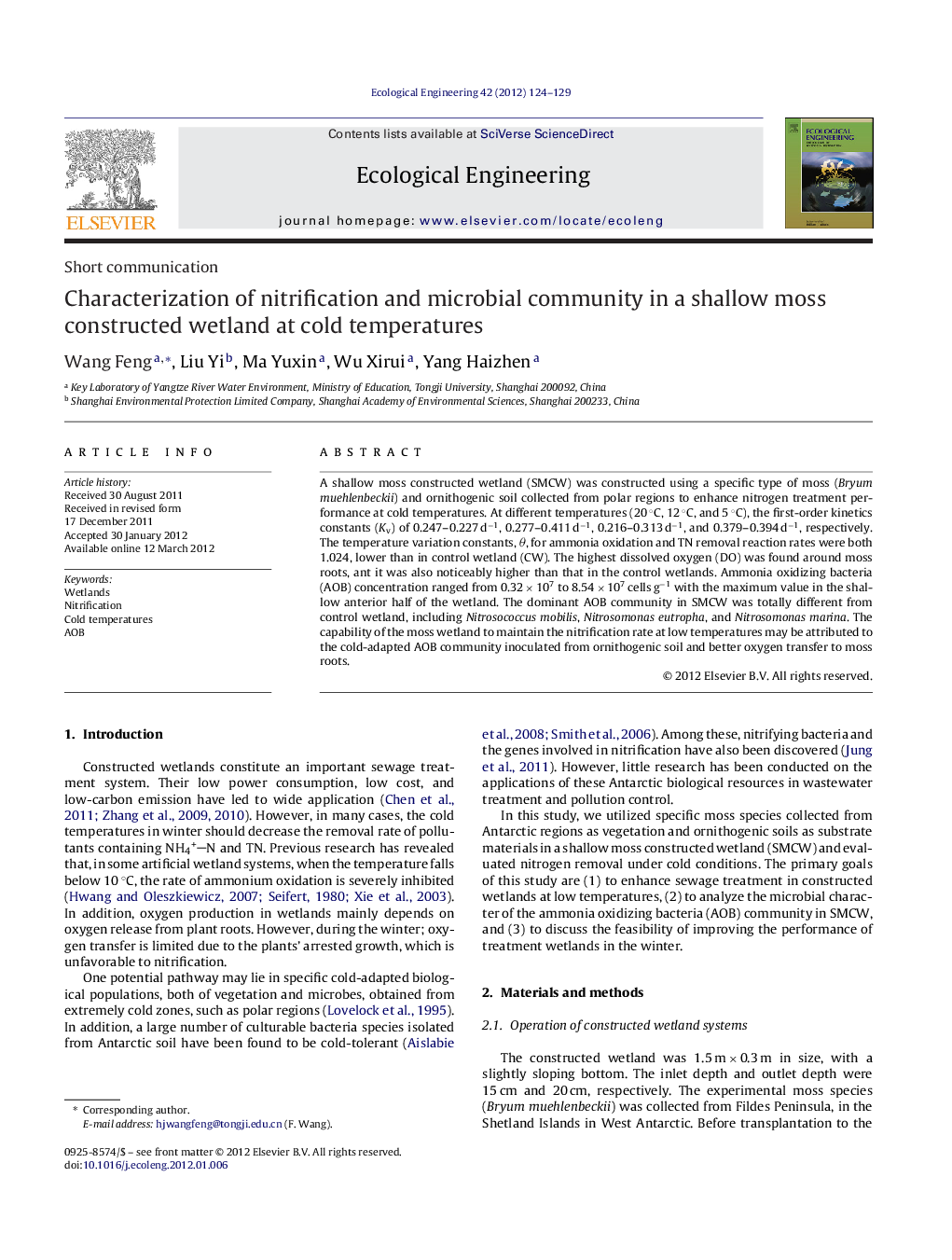| Article ID | Journal | Published Year | Pages | File Type |
|---|---|---|---|---|
| 6302759 | Ecological Engineering | 2012 | 6 Pages |
A shallow moss constructed wetland (SMCW) was constructed using a specific type of moss (Bryum muehlenbeckii) and ornithogenic soil collected from polar regions to enhance nitrogen treatment performance at cold temperatures. At different temperatures (20 °C, 12 °C, and 5 °C), the first-order kinetics constants (Kv) of 0.247-0.227 dâ1, 0.277-0.411 dâ1, 0.216-0.313 dâ1, and 0.379-0.394 dâ1, respectively. The temperature variation constants, θ, for ammonia oxidation and TN removal reaction rates were both 1.024, lower than in control wetland (CW). The highest dissolved oxygen (DO) was found around moss roots, ant it was also noticeably higher than that in the control wetlands. Ammonia oxidizing bacteria (AOB) concentration ranged from 0.32 Ã 107 to 8.54 Ã 107 cells gâ1 with the maximum value in the shallow anterior half of the wetland. The dominant AOB community in SMCW was totally different from control wetland, including Nitrosococcus mobilis, Nitrosomonas eutropha, and Nitrosomonas marina. The capability of the moss wetland to maintain the nitrification rate at low temperatures may be attributed to the cold-adapted AOB community inoculated from ornithogenic soil and better oxygen transfer to moss roots.
